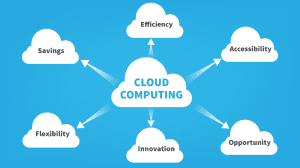Remote work has quickly changed from being a practical choice to becoming commonplace, radically altering how companies function all around the world. The potential for remote work has expanded due to technological improvements, creating new opportunities for both businesses and employees. This essay will examine the advantages, practical applications, in-depth case studies, and cutting-edge technology
Remote work has quickly changed from being a practical choice to becoming commonplace, radically altering how companies function all around the world. The potential for remote work has expanded due to technological improvements, creating new opportunities for both businesses and employees. This essay will examine the advantages, practical applications, in-depth case studies, and cutting-edge technology influencing remote work in the future.
Employees that work remotely, sometimes referred to as telecommuting or working from home, use technology to stay connected while carrying out their duties outside of conventional office settings. The COVID-19 epidemic sped up this trend by forcing companies to quickly implement remote work arrangements. With the support of strong digital tools that facilitate smooth and effective communication, remote work has emerged as the “new normal” of today.
Benefits of Remote Work

Image by Freepik.com
Remote work offers several advantages for employees, employers, and the economy at large:
a. Increased Flexibility
Employees enjoy greater flexibility, allowing them to create a work-life balance that suits their personal needs. This leads to increased job satisfaction and higher productivity, as workers can manage their schedules better and avoid long commutes.
b. Cost Savings
Remote work reduces costs for both employees and employers. Workers save on commuting, meals, and work attire, while employers can reduce expenses associated with office space, utilities, and other overheads. For instance, companies like Buffer reported saving over $1 million annually in overhead costs due to a fully remote setup.
c. Wider Talent Pool
Remote work enables companies to hire from a global talent pool. This diversification of talent brings in a wide range of skills and perspectives, promoting innovation and creativity.
d. Environmental Benefits

Image by Freepik.com
Remote work significantly reduces the carbon footprint by minimizing daily commuting and lowering energy consumption in office buildings. This shift has contributed to better air quality and lower greenhouse gas emissions in many cities worldwide.
e. Higher Productivity
Studies have found that employees working remotely are often more productive than their office-based counterparts. This is partly due to fewer distractions, reduced stress from commuting, and a more personalized working environment.
3. Key Technologies Shaping Remote Work
Advancements in technology are at the core of remote work’s evolution. Here are some critical tools and technologies driving remote work:
a. Collaboration Platforms
Tools like Slack, Microsoft Teams, and Zoom have redefined communication, making it easy for remote teams to collaborate in real-time, conduct video meetings, and share documents effortlessly.
b. Cloud Computing

Image by Yandex.com
Cloud-based tools like Google Workspace and Dropbox have enabled remote workers to access, store, and share information from anywhere. This technology supports data management, file storage, and collaborative editing.
c. AI and Automation
AI-powered tools like Asana and Trello automate project management tasks, helping teams track progress, set deadlines, and ensure accountability. AI chatbots are also improving customer service for remote teams by managing customer interactions seamlessly.
d. Cybersecurity Solutions
Remote work has increased the need for robust cybersecurity measures. Solutions like VPNs, multi-factor authentication (MFA), and zero-trust architectures are essential to ensure secure access to company data and networks.
e. Virtual Reality (VR) and Augmented Reality (AR)
While still emerging, VR and AR technologies offer immersive remote meetings, enabling participants to feel as if they are in the same room. Companies like Spatial are pioneering virtual workspaces that facilitate interactive discussions and presentations.
4. Examples of Companies Embracing Remote Work
Many companies have successfully adopted remote work models, proving its viability and benefits.
a. GitLab
As a fully remote company with over 1,000 employees worldwide, GitLab has developed a comprehensive remote work culture. It relies heavily on tools like Zoom, Slack, and GitLab’s own project management software to ensure seamless operations.
b. Zapier

Image by Yandex.com
Zapier, a remote-first automation software company, has leveraged remote work technology to manage its globally dispersed team effectively. The company uses tools like Slack for communication and Zoom for video conferencing, proving that a business can thrive without a physical office.
c. Shopify
Shopify declared itself a “digital by default” company, permanently transitioning to remote work during the pandemic. It has invested in digital infrastructure to support its employees, offering remote collaboration tools and home office stipends to boost productivity.
5. In-depth Case Studies of Remote Work Technology
Here are some comprehensive case studies showcasing successful remote work implementations, along with additional insights into the technology involved:
Automattic
Automattic, the parent company of WordPress, has over 1,300 employees working remotely across the globe. The company emphasizes asynchronous communication, allowing employees to work in different time zones. Tools like P2, an internal blog system, facilitate discussions, while Slack and Zoom are used for real-time communication.
Impact:
- Increased employee satisfaction and retention
- Enhanced productivity due to flexible work hours
- Significant cost savings in real estate expenses
Twitter

Image by Yandex.com
During the pandemic, Twitter announced that employees could work from home indefinitely. To support this model, the company invested in collaboration tools, provided internet stipends, and emphasized mental health support to maintain employee well-being.
Impact:
- Maintained productivity despite the shift to remote work
- Higher employee morale due to flexible work arrangements
- Strengthened company culture through regular virtual engagements
Dell Technologies
Dell Technologies implemented a “Connected Workplace” program, allowing its workforce to adopt flexible remote work arrangements. This shift involved using collaborative tools like Microsoft Teams and Cisco Webex to enhance productivity and secure cloud services for safe data management.
Impact:
- Over 65% of employees opted for a hybrid or remote work model.
- Reduced real estate expenses by 20%.
- Higher employee engagement scores and lower turnover rates.
Buffer
Buffer is a fully remote company that employs over 85 staff members from 15 different countries. The company uses tools like Slack, Zoom, and Buffer’s own social media tools to maintain team communication, with a strong focus on asynchronous work to manage different time zones effectively.
Impact:
- Achieved operational efficiency through well-defined communication protocols.
- Reduced annual operational costs by over $1 million.
- Increased employee happiness by focusing on work-life balance.
GitHub
GitHub, a leading platform for developers, has adopted a hybrid remote work model, utilizing tools like GitHub Issues for project management and Microsoft Teams for communication. They implemented advanced cybersecurity measures to maintain the security of their remote teams.
Impact:
- Increased global talent acquisition by 30%.
- Maintained productivity metrics, even with a geographically dispersed team.
- Stronger focus on cybersecurity with multi-factor authentication and zero-trust networks.
6. Challenges and Solutions
While remote work offers many benefits, it also comes with its own set of challenges:
a. Communication Barriers
Effective communication can be a hurdle for remote teams, especially when working across different time zones. Solution: Adopting asynchronous communication methods and leveraging tools like Loom and Slack can help bridge communication gaps.
b. Isolation and Burnout
Working from home can sometimes lead to feelings of isolation or burnout due to a lack of social interaction. Solution: Regular virtual team-building activities, check-ins, and encouraging employees to take breaks can promote mental well-being.
c. Security Concerns
Remote access can expose sensitive company data to cyber threats. Solution: Implementing secure access controls, using VPNs, and conducting regular security audits can enhance data security.
7. Future Trends in Remote Work

Image by freepik.com
As technology continues to advance, several trends are likely to shape the future of remote work:
a. Hybrid Work Models
The future is leaning toward hybrid models, where employees can choose to work remotely or come into the office as needed. This model offers flexibility while retaining the advantages of in-person interactions.
b. AI-Driven Insights
AI tools will play a significant role in monitoring productivity, improving collaboration, and providing insights into employee performance. AI-powered virtual assistants will help manage tasks, schedule meetings, and facilitate better communication.
c. Virtual Offices
As VR and AR technologies evolve, virtual offices may become the norm, allowing employees to interact in immersive digital environments, conducting meetings, brainstorming sessions, and more.
d. Focus on Employee Well-being
Companies will invest more in tools and resources that promote employee well-being, such as mental health apps, fitness programs, and flexible work hours to reduce burnout.
Conclusion
Unquestionably, technical breakthroughs that improve security, collaboration, and employee well-being will drive the future of remote work. Remote employment will probably become a common practice among employees worldwide as companies continue to adjust to these developments. Remaining successful in this changing environment will require embracing the appropriate technology and cultivating an innovative and adaptable culture.
FAQs
Q1. What is remote work technology?
Remote work technology refers to tools and software that facilitate work outside of traditional office environments, including communication tools, project management software, and cloud-based services.
Q2. How has COVID-19 influenced remote work?
COVID-19 accelerated the adoption of remote work, making it a necessity for many businesses and pushing companies to invest in technology that supports remote operations.
Q3. What are the most popular remote work tools?
Popular remote work tools include Slack, Zoom, Microsoft Teams, Google Workspace, and Trello.
Q4. What challenges do remote workers face?
Challenges include communication barriers, feelings of isolation, and cybersecurity risks.
Q5. How can companies support remote employees?
Companies can provide collaboration tools, mental health resources, and flexible schedules to support remote employees
















